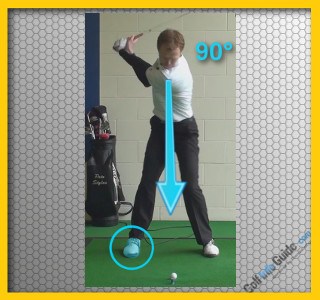
1. A Proper Shoulder Turn Could be the Key to Eliminating Your Golf Slice
Making a full shoulder turn is one of the most important fundamentals of the golf swing, yet most golfers fail to achieve it consistently. (That’s one reason so many have slice problems.) A proper turn is when you rotate the upper body so the lead shoulder comes under your chin, the shoulders at a 90° angle to the target line. If your shoulder rotation is stopped too early, your arms will tend to fly outward, across the target line, on the downswing, causing an outside-to-inside club path that produces the dreaded banana-ball. A full golf swing shoulder turn will keep the arms “on plane,” inside the target line.
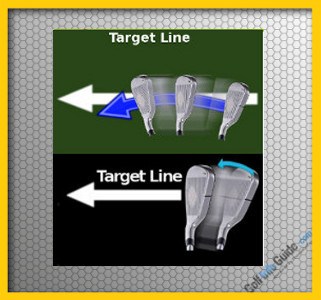
2. Inside-To-Outside is the Path to Better Golf
One of the biggest differences between professional and amateur golfers is the path of their downswings. While the vast majority of amateurs hit the ball with an outside-to-inside path, virtually every pro golfer routes the club from inside-to-outside. To understand this concept, imagine a straight line starting a few feet behind the ball and running through it to the target (i.e. the target line). The clubhead may approach the ball from inside this line – between the golfer and the ball – or from the outside.
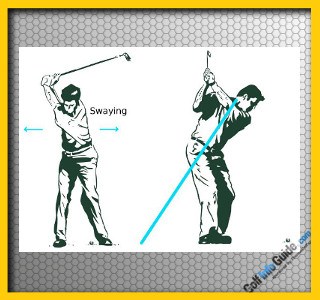
3. How to Create Consistent Ball-Striking Golf Swing
One of the biggest struggles among golfers is their inability to consistently make good contact with the golf ball. Practice is the key – but there are also some particular things to keep in mind while on the course, or tuning your game on the range. One of the most common mistake”s golfers makes is swaying or “moving-off” the ball during the swing. Moving the body sideways or up-and-down is detrimental to hitting the golf ball consistently. Often, you don’t realize you’re doing it until you ask someone to watch your head position during the swing.
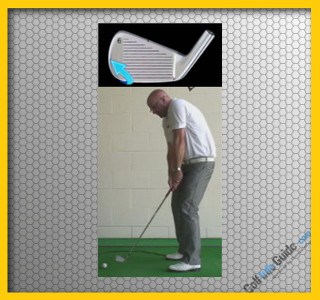
4. Causes and Cures: Golf Shots Off the Club’s Toe
There’s only one good thing about hitting the ball off the toe (outer end) of the club: it means you’re a long way from shanking it off the hosel. Otherwise, toe contact is no good, decreasing both distance and accuracy. While there are numerous potential reasons for this, setting up with the shoulders open to the target line (aimed left for a right-hander) is a common cause of toe contact. Check your shoulder alignment by addressing the ball and looking at the position of your arms. If your right arm is above the left, or closer to the target line, your shoulders are open.
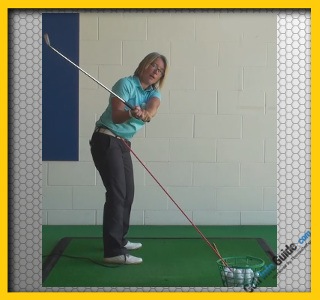
5. One Plane Golf Swing: Pros and Cons
If you’re curious about the nature of your swing plane, stand with a mirror or glass window to your right and swing a club back to the top. It should be fairly obvious whether you swing on a single plane (left arm matches shoulders) or two separate angles (left arm above shoulders). Because of the differences, see your PGA professional for tips on getting the most from your particular action.

6. Think “Clubhead Outside the Hands” for Solid Takeaway, Golf Tip
You’ll often hear pro golfers and instructors refer to “keeping the clubhead outside the hands” on the takeaway. (“Hands inside the clubhead” means the same thing.) This puts the club on a square path and increases your chances of making an on-plane swing. A simple way to instill a “clubhead outside the hands” takeaway is to keep the butt of the club pointing at the right hip as it passes by. If the butt points left of this spot, you’ve got too much wrist action and/or an inside path.

7. Top 3 Ways to Improve Your Golf Swing Tempo
Tempo is one of golf’s most basic yet elusive concepts. So what is it, exactly? According to the dictionary, tempo is the “characteristic rate, rhythm or pattern of work or activity.” In golf terms, it’s the pace of your swing, back and through. Some golfers have a slow or smooth tempo, like Fred Couples. Others swing with a quick tempo, a la Nick Price. In other words, it’s a highly individualized component – there’s no correct tempo for every golfer, but there is a correct tempo for each golfer.

8. Understanding Wrist Hinge in the Golf Swing
Hinging or cocking the wrists is a key component of a powerful golf swing. When taking the club back, the wrists must naturally begin to hinge by the time the hands and club reach waist level. If the wrists remain rigid to the top of the swing, you’ll fail to generate power or to get the club on the right plane.
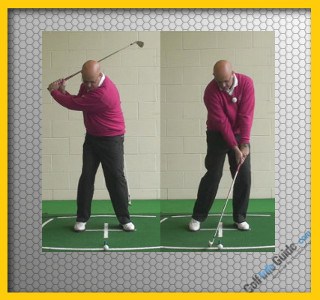
9. Problem of Not Getting the Golf Ball Up: Cure Hit Down Onto the Back of the Golf Ball
A common problem in golf for beginning and inexperienced players is trusting the loft of their clubs to get the ball airborne. Often times with these players you will see motions through the impact zone that are referred to as “scooping” whereby the golfer adds loft to the club in an effort to help get the ball in the air. However, looking at the impact zones of tour professionals, you see quite a contrast. For these advanced players, their hands are ahead at impact which lessens the effective loft of the club.

10. How to Correct a Flat Golf Swing
Has your golf swing gone flat? Are you hitting a lot of hooks, or perhaps pushing your shots? Catching the ball thin with your irons? A so-called “flat” swing plane can cause these problems and more. A swing is considered flat when the left arm forms an angle of less than 45° with the ground at the top of the backswing (when viewed looking down the target line). In other words, it's more horizontal than vertical, the opposite of an “upright” swing.





